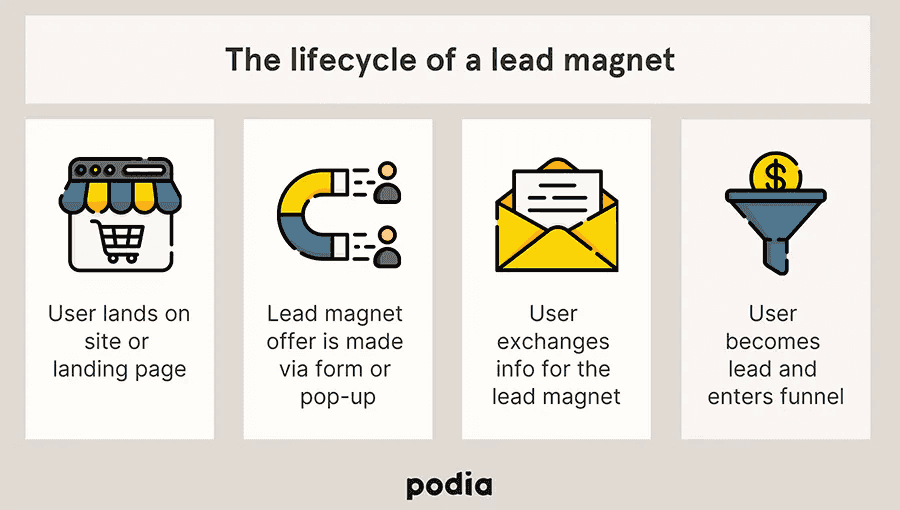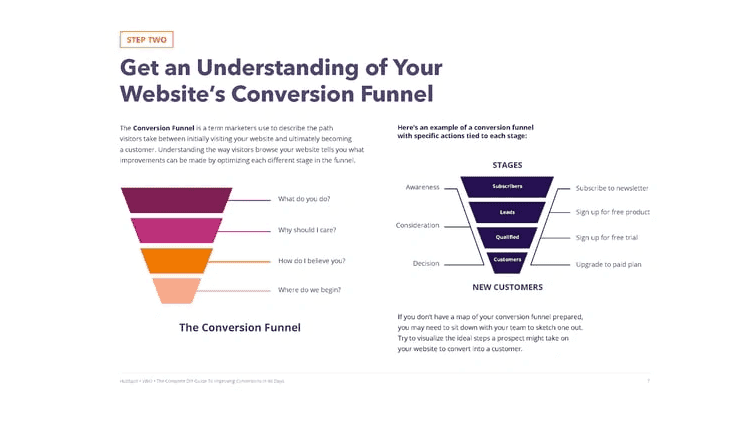10 Steps To Build An Email List For Affiliate Marketing
Last updated on Sunday, March 3, 2024

An email list can be a valuable asset for any business, allowing you to directly reach and communicate with your target audience. But simply having a list of email addresses is not enough - it's important to know how to effectively use that list to drive engagement, conversions, and ultimately, revenue.
In this guide, we'll provide you with the tools and knowledge you need to build and maintain a successful email list. From creating high-quality opt-in forms to crafting compelling email content, we'll cover everything you need to know to make the most out of your email list.
Step 1: Defining Your Niche
Before the first email is crafted, before the initial sign-up form is coded, there lies a fundamental task that is too often overlooked: defining your niche.
In the affiliate marketing world, your niche is more than a category, it's your game board.
Understand Your Passion
Knowing your abilities, interests, and constraints is essential. If you are launching a blog or website, it's necessary to align the niche with your expertise.
The more personal passion you pour into your content, the more authentic and engaging it becomes.
Know The Market
Conduct thorough market research to validate the potential of your chosen niche.
Tools like Ahrefs and SEMrush can be invaluable allies in this pursuit, helping you to identify search volumes, competition, and trending topics.
Align Passion With Profit
Find the intersection between what you love and what the market craves.
Use the data from your research to discover gaps in the market. These gaps are your opportunities.
Consider the following visual when choosing your niche:
Source: LinkedIn
Step 2: Crafting an Irresistible Lead Magnet
Once your niche is etched in stone, your next task is to craft the magnet that draws.
A lead magnet is an offer, or incentive that creates a compelling value for users in exchange for their email address.
Types of Lead Magnets
A lead magnet can come in various formats.
eBooks, whitepapers, discounts, access to exclusive content, webinars, online presentations, and courses are a few examples.
The key is to make it something your audience can't resist.
Designing the Magnet
Ensure your lead magnet is professionally designed and delivers on its promise.
Its quality is a reflection of what subscribers can expect from you.
Use tools like Canva or hire a designer to help make it polished and professional.
The Almighty Headline
Create a compelling headline.
It should be clear, compelling, and concise, focusing on the value to the subscriber.
It's the essential grasp of what you're offering, so ensure it's sharp and straight to the point.

Source: Podia
Step 3: Building a High-conversion Landing Page
The landing page is the silent salesman.
It's a simple webpage with a singular purpose: to convert.
It's where you land your potential subscribers after offering them your Lead Magnet.
Keep it Focused
A high-conversion landing page is clutter-free and laser-focused.
It should have no other link or button that could distract the user from the CTA (call to action).
Compelling Copy
Write copy that sells.
Your offer should be persuasively and succinctly laid out.
Keep the reader engaged and make it easy for them to convert.
Test, Analyze, Iterate
Use A/B testing to compare different versions of your landing page.
It will help you understand what elements are most effective in converting your visitors to subscribers, and then optimize accordingly.

Source: Erikemanuelli
Step 4: Choosing the Right Email Service Provider
Your email service provider is your most crucial partner in building, nurturing, and growing your email list.
It must be reliable, feature-rich, and scalable.
Key Features
Look for features such as automation, segmentation, and A/B testing capabilities.
Services like ConvertKit, MailChimp, and Aweber are popular choices that cater to affiliate marketers with specialized needs while the best CRM for email marketing provides a comprehensive view of leads, email analytics, and more.
Data Privacy
Ensuring that your service provider is compliant with data regulations such as GDPR is crucial.
Subscriber data privacy is a serious issue and not to be taken lightly.
Scalability
Your business may be small today, but a year from now, this email list could be much larger.
Choose a provider that can scale your growth without breaking the bank.
Step 5: Crafting Valuable and Engaging Content
With the infrastructure in place, it's time to create the fuel that powers your email marketing engine.
It's your content!
The Editorial Calendar
Develop an editorial calendar to ensure you have a consistent flow of content. It helps to plan not just what you'll send, but when and to whom.
Educational and Entertaining
Your content should be a mix of educational and entertaining.
It should solve problems, offer insights, and present your offers in a genuinely compelling way.
Variety is Key
Don't just stick to one type of content; vary your emails to keep your subscribers engaged.
Use newsletters, service reviews, success stories, roundups, and more to add diversity to your email marketing strategy.
Step 6: Optimizing for Conversions
Optimizing is never a one-time task.
It's continuously refining and improving your strategies to yield the best possible results.
Clear Call to Action
Your emails should have clear and prominent CTAs.
They should be compelling and feed into the natural flow of your content.
Tools like Cuttly can help create short, branded links for clearer calls to action.
Landing Page Experience
Continually monitor and tweak your landing pages for a smooth user experience.
The fewer clicks between the email and the conversion, the better.
Analytics is Your Friend
Use the analytics provided by your email service provider to track how your emails are performing.
Your data is a treasure. It tells you where you need to adjust your strategy.

Source: Hubspot
Step 7: Growing and Segmenting Your List
List growth and segmentation are like tending a garden. It flourishes with care.
Growing Pains
Implement various strategies for list growth, such as on-site forms, social media campaigns, and partnerships.
Tools like HelloBar and OptinMonster can help capture emails from the traffic you already have.
Segment With Intent
Segment your list based on various factors such as interests, engagement, and behaviors to provide more personalized content and offers.
This targeted approach usually results in higher engagement and conversion rates.
Keep it Clean
Regularly audit your list for engagement and remove inactive subscribers.
A smaller, more active list is much more valuable than a larger, disengaged one.
Step 8: Leveraging Automation to Maximize Engagement
Automation is your silent partner, the one that never sleeps and tirelessly works to engage your subscribers.
Welcome Series
Set up a welcome series that greets each new subscriber. It's your first impression, so make it count with a genuine, value-driven sequence.
Drip Campaigns
Use drip campaigns to deliver a series of emails that educate and warm up your new leads before hitting them with a direct sale.
Cross-promotions and Upsells
Utilize automation to provide cross-promotions and upsells. When a customer buys a run-of-the-mill item, automation should follow up with accessories or complementary products.
Step 9: Email Marketing Regulations and Best Practices
Being a good email marketer is about more than just achieving high open rates.
Compliance with regulations and industry best practices are equally vital.
Familiarize with Regulations
Understand the CAN-SPAM Act and GDPR to ensure you're not running afoul of the law.
Respect your subscriber's inbox. It's a sacred space.
Engaging and Not Pestering
Don't over-email. Be selective about what you send.
It's better to have quality content than a quantity that annoys and encourages unsubscribed.
Transparency is Key
Be transparent about what your subscriber is signing up for.
Clearly state what kind of content they can expect and how often they can expect it.
Step 10: Measure, Adapt, and Optimize
The final step is an ongoing one.
Measure your efforts, adapt to trends, and continuously optimize your list-building and email marketing strategies.
Key Performance Indicators (KPIs)
Understand which KPIs to watch and use them as your guide. Open rates, click-through rates, and conversion rates give you a full picture of your campaign's performance.
Learning from the Data
The data doesn't lie. If a strategy isn't working, don't be afraid to pivot and try something different.
Every failure is a stepping stone to success.
Staying Informed
The world of digital marketing is always evolving.
Stay informed of new trends, tools, and best practices to keep your strategies sharp and effective.
Final Words
In the world of affiliate marketing, your email list is your lifeline.
Building it requires foresight, patience, and a commitment to delivering value with every message sent.
If you follow these ten steps, you can ensure that every subscriber represents a number and an opportunity to flourish in the digital landscape.
Remember, a well-crafted email list is not just a repository of names, it is a testament to the relationship and the trust you've built with your audience. It's the fruits of your labor, reaped through each meticulously planted step.

Article by:
Erik Emanuelli
Blogger
Erik Emanuelli has been in the online marketing game since 2010. He’s now sharing what he has learned on his website. Find more insights about SEO and blogging here.


